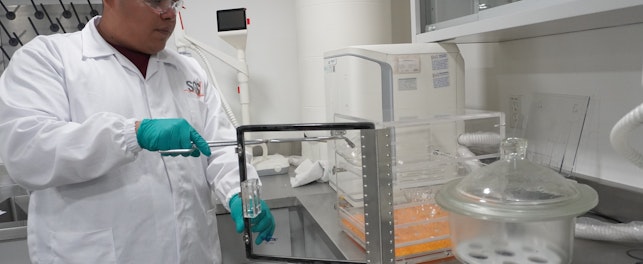Are you familiar with the materials used in your clothing, footwear or accessories? Do you have insights into the origins of these fabrics or where they are assembled to create the product you buy? Not all consumers prioritize these questions, but they are crucial for the fashion industry.
Supply chain traceability in the fashion industry
In recent years, supply chain traceability and transparency have emerged as a critical issue in the fashion industry’s sustainability transformation. Traceability is the process of identifying the origins of a product. 1 It involves a series of interconnected stages along the supply chain, including the sourcing of raw materials, processing, production, transportation and distribution.
However, due to the complexity and globalized nature of fashion industry supply chains, brands and retailers often need help seeing their complete value chain. This lack of visibility leads to inefficiencies and challenges in tracking a product’s journey. Brands may struggle to verify the origin of a particular material, ensure compliance with labor standards or accurately assess the environmental impacts of their products.
The fast-paced nature of the fashion industry, driven by trends and consumer demand for new products, can also create further complications when trying to improve traceability. Short production cycles and frequent product launches make it difficult for brands to prioritize traceability initiatives and invest in robust monitoring systems. Furthermore, the increased use of preferred materials, such as recycled or bio-based fibers, amplifies the demands placed on sourcing raw materials as brands need to provide solid evidence to ensure the veracity of product sustainability claims.
Traceability drivers
A primary driver for traceability is regulatory compliance. Governments and regulatory bodies are imposing ever-stricter regulations and non-financial information disclosure requirements on businesses. For example, the EU cooperative sustainability due diligence directive (CSDDD) asks companies to identify and address potential and actual adverse human rights and environmental impacts across their operations, subsidiaries and value chain. 2 The EU deforestation-free product regulation, which entered into force in 2023, makes the demand that goods such as timber, leather and rubber must not originate from areas of deforestation or forest degradation. 3 Companies under the scope of these regulations are required to conduct strict due diligence across their complete value chain. These regulations prioritize the need for traceability since non-compliance may lead to legal sanctions, reputational damage and financial losses.
Moreover, the increasing awareness of product sustainability among consumers is also driving the need for greater traceability. Ethical and sustainable practices have become significant factors influencing purchasing decisions. Brands that can demonstrate transparency and responsible sourcing practices are more likely to gain consumer trust and loyalty.
The third factor is the corporate image. Traceability allows companies to evaluate supplier performance, identify and address financial and operational risks proactively, and weed out inefficiencies. In addition, traceability initiatives enable brands to improve their corporate image by showcasing a commitment to ethical sourcing, sustainable production and social responsibility.
Promoting traceability
To enhance supply chain traceability in the fashion industry, brands can work closely with suppliers to map the entire supply chain, identify potential risks and establish corresponding monitoring mechanisms. Conducting regular audits and inspections of suppliers' facilities is essential for ensuring compliance with labor standards, environmental regulations and ethical practices. Using robust monitoring systems will also help companies track a supplier’s performance, allowing them to promptly address any deviations from established criteria.
Brands can also apply and promote innovative digital methods, such as blockchain technology, to enhance the collection, management and analysis of supply chain data. Fashion brands can create transparent and tamper-proof records for each stage of production and transaction, from raw material sourcing to product distribution. This enables real-time traceability and provides consumers with verifiable information about the origins and journey of their garments.
SGS Solution
We offer comprehensive traceability services to support the fashion industry in achieving its traceability goals.
Solutions include:
- Traceability management program setup – supply chain mapping and traceability standard operation procedures development and implementation
- Traceability management training – tailor-made training content, including traceability standards and requirements
- Traceability digital platform (SGS SMART Source) – order data collection, management, query and analysis
- Product order review – verify the completeness and consistency of order documentation
- Facility on-site verification – assess a supplier’s traceability management performance
- Tracer solution – employ a pigment tracer to track a product along the supply chain
Solutions can be combined and customized to meet the demands of the brand or retailer.
Working in partnership, we provide services that support companies to enhance traceability and transparency in their supply chains to enable a more sustainable and circular future.
Enjoyed this article?
Find more news and updates in our Consumer Compact newsletter >
Delivered direct to your inbox
Subscribe to Consumer Compact >
References
1 GS1 Global Traceability Standard
2 Corporate sustainability due diligence - European Commission
3 Regulation on Deforestation-free products - European Commission
© SGS Société Générale de Surveillance SA.





